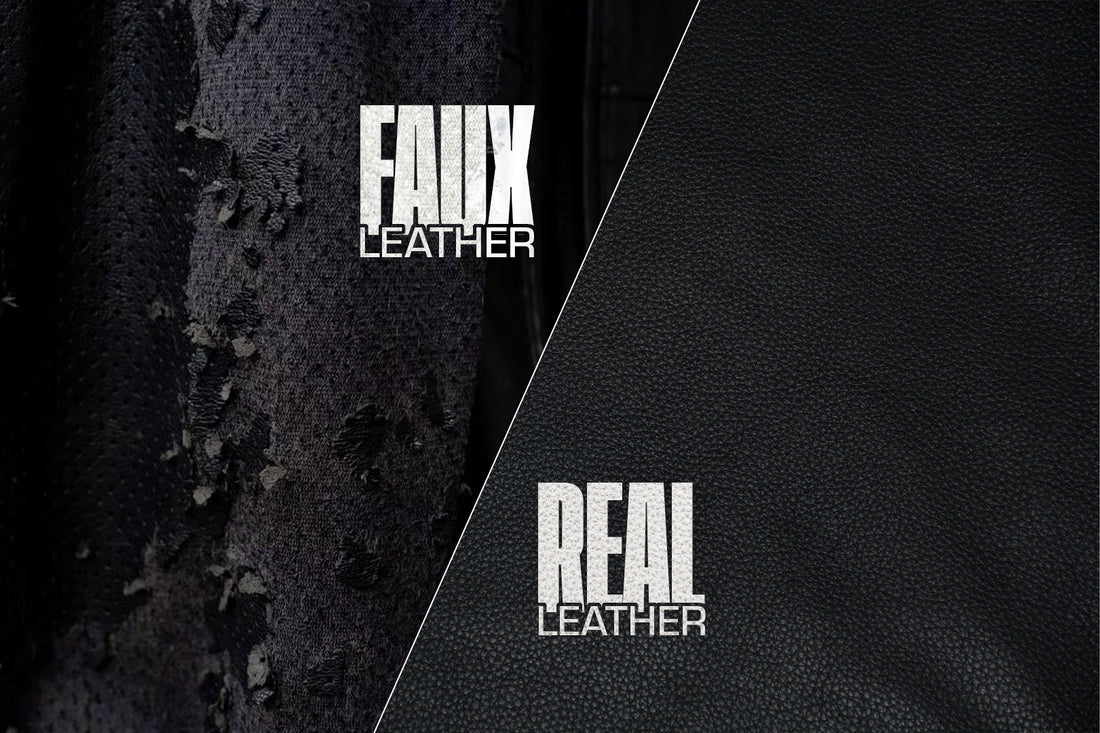
How to Identify Genuine Leather vs. Synthetic
Share
Leather is a classic material that people love because it's strong, stylish, and lasts a long time. You’ll find it in jackets, shoes, bags, and even furniture. But today, there are also many fake versions out there. These are made to look like real leather but aren’t the same.
That’s why many people ask, “How do I know if it’s real leather or fake?”
In this guide, we’ll explain the main differences between real and fake leather, and give you simple ways to tell them apart, so you can shop with confidence.
Understanding the Basics
Genuine Leather:
-
Made from animal hide (commonly cow, goat, or buffalo).
-
Has natural imperfections, grains, and a unique texture.
-
Ages gracefully with a patina over time.
Synthetic Leather (PU or PVC Leather):
-
Man-made material, usually plastic-based.
-
Manufactured to look like leather but lacks the depth and character of the real thing.
-
Often cheaper and more uniform in texture.
Key Ways to Identify Genuine Leather
1. Touch & Feel Test
-
Genuine Leather: Feels soft, flexible, and warm to the touch. It has an irregular, slightly grainy texture with a natural feel.
-
Synthetic Leather: Feels smoother or rubbery, often too perfect. It can be cold or plasticky in touch.
Tip: Bend the leather slightly. Real leather wrinkles or forms small creases; synthetic stays stiff or uniform.
2. Smell Test
-
Real leather has a rich, earthy, and slightly musky smell.
-
Fake leather smells like chemicals or plastic due to its artificial composition.
This test is often the quickest giveaway, especially for leather enthusiasts.
3. Pore & Grain Pattern
-
Genuine Leather: You’ll notice an inconsistent, natural grain with slight blemishes or pores.
-
Synthetic Leather: The surface pattern is often machine-made, with perfect, repeating textures.
Think of real leather like a fingerprint—no two pieces are exactly alike.
4. Water Test
Place a small drop of water on the surface:
-
Real Leather absorbs it slowly, darkening slightly.
-
Fake Leather resists water and it just sits on top.
Warning: Only use this test if you’re allowed to test the item directly.
5. Burn Test (For Experts Only)
-
Genuine Leather burns slowly and smells like burnt hair.
-
Synthetic Leather burns quickly, melts, and smells like burning plastic.
Caution: This is NOT recommended for store testing. Only use this method on scrap material.
6. Price & Label
-
Real leather is usually more expensive due to its production cost and quality.
-
Look for labels like:
-
Full Grain Leather
-
Top Grain Leather
-
Genuine Leather
-
Avoid vague terms like man-made materials or PU Leather.
Ask the Right Questions
When shopping, don’t hesitate to ask:
-
What type of leather is this?
-
Is it full grain or bonded?
-
How should I care for it?
A reputable seller will confidently share details. If they dodge, be cautious.
Quick Comparison Table
|
Feature |
Genuine Leather |
Synthetic Leather |
|
Texture |
Uneven, grainy |
Smooth, consistent |
|
Smell |
Earthy, natural |
Chemical, plastic-like |
|
Aging |
Develops patina |
Cracks, peels over time |
|
Water Absorption |
Absorbs water |
Resists water |
|
Price |
Higher |
Lower |
Identifying real leather comes down to using your eyes, nose, and hands. While synthetic leather may serve as a budget-friendly alternative, genuine leather offers character, durability, and timeless appeal that improves with age.
So next time you shop, use these tips to ensure you’re investing in the real deal.
